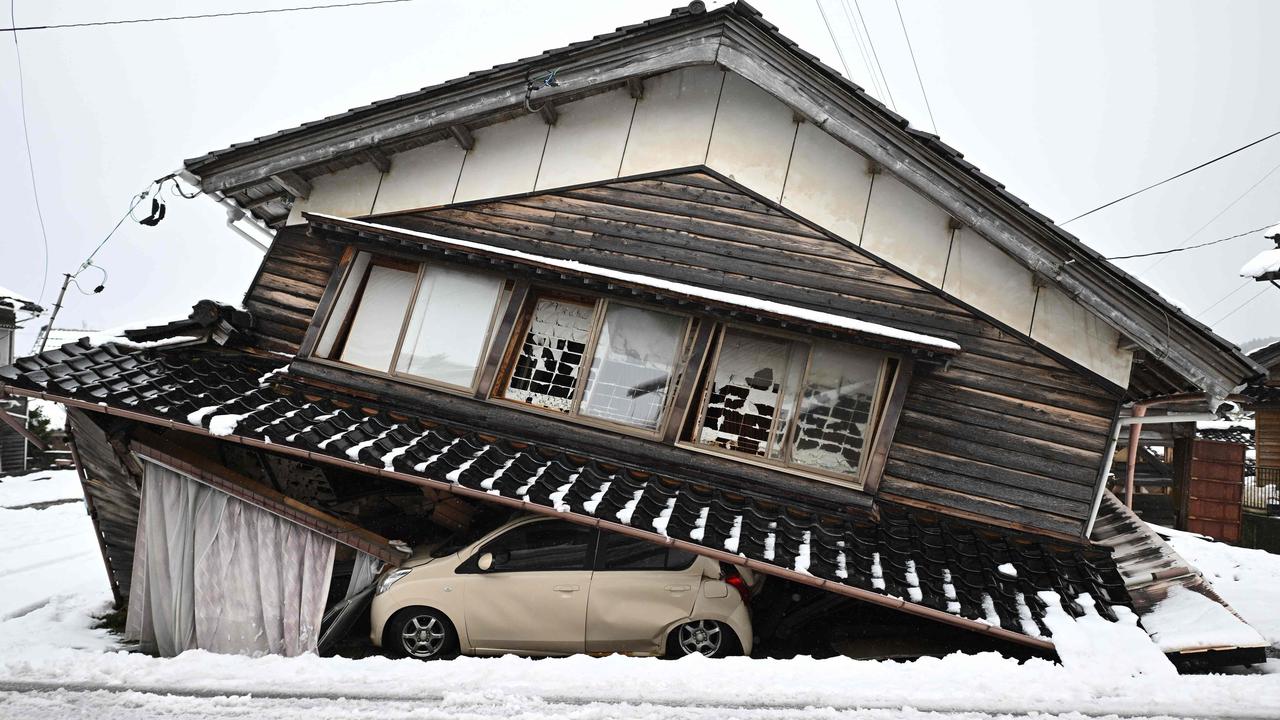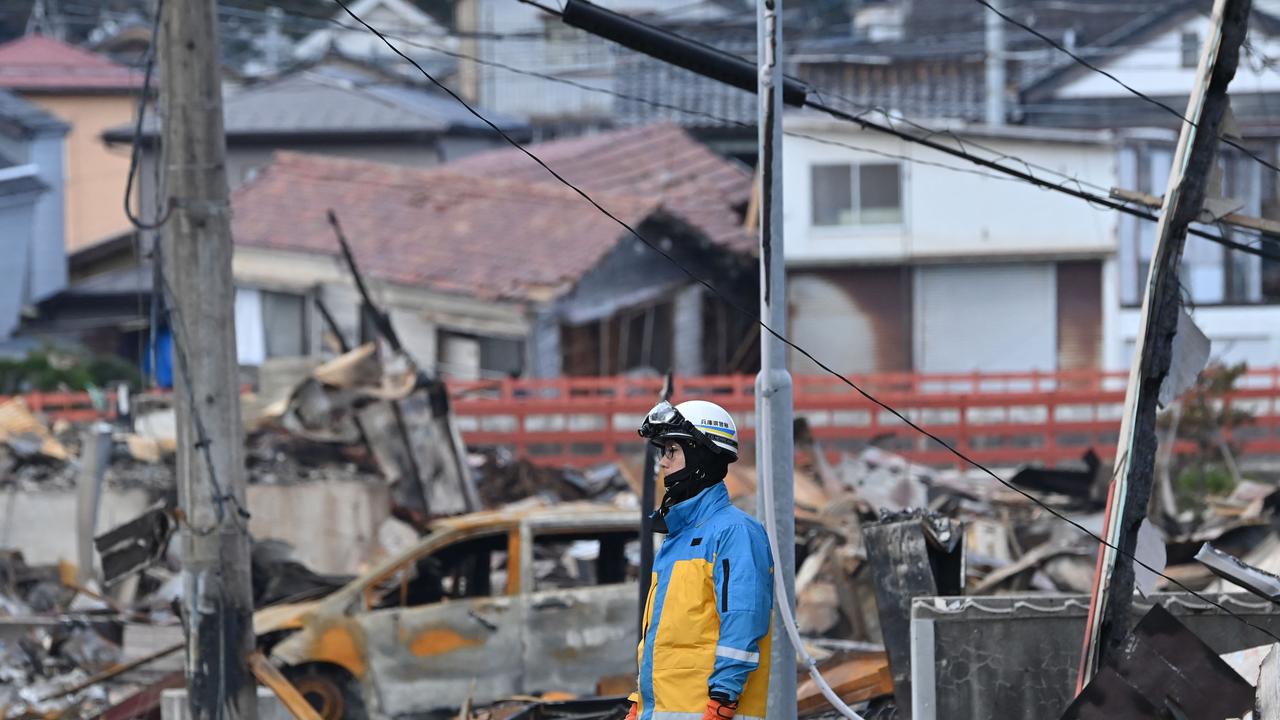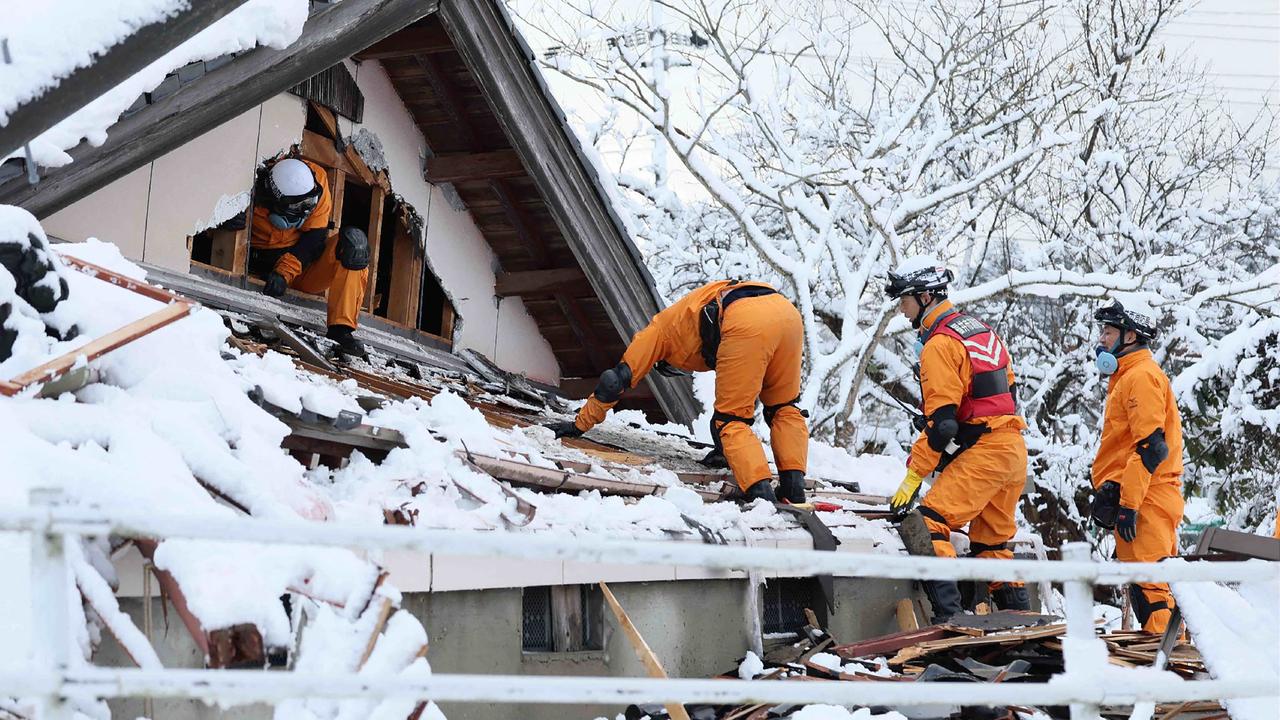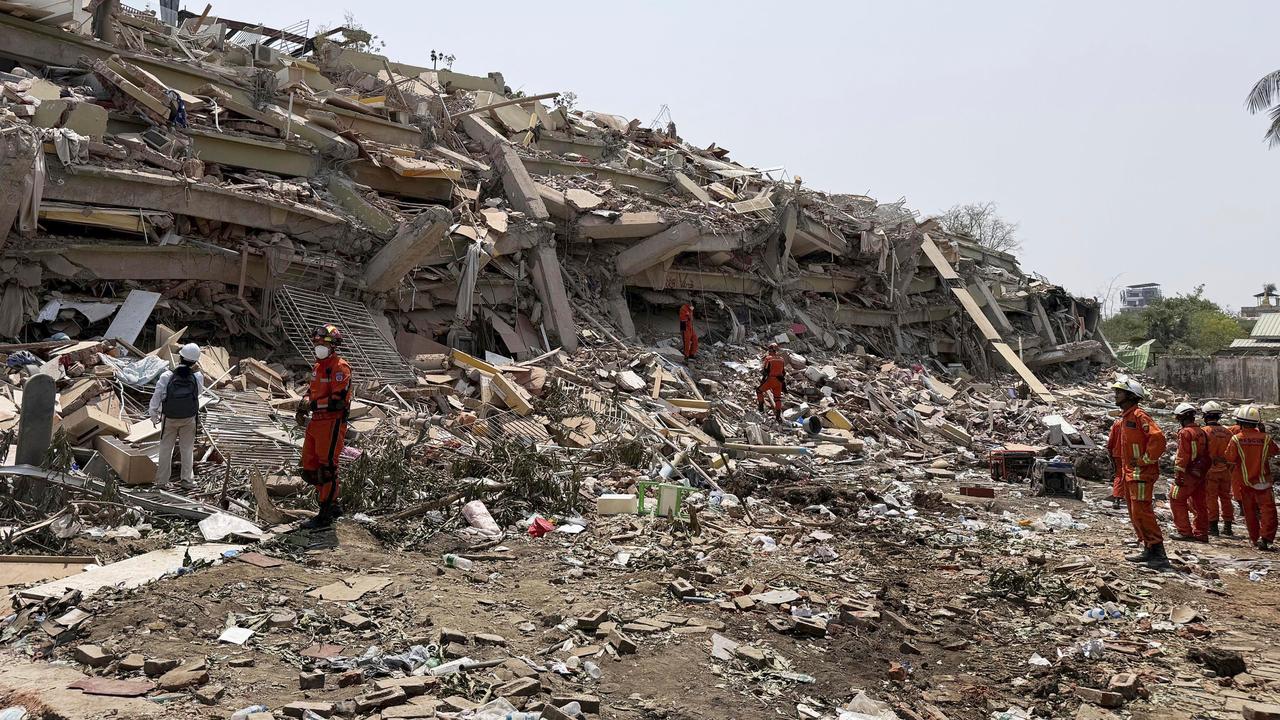Horror toll of ‘megaquake’ revealed by Japanese government
One of the world’s most populous nations has warned 300,000 of its residents could die in an ominous new prediction.
Modelling has predicted a “megaquake” could kill almost 300,000 people and wipe $2.8 trillion from Japan’s economy, according to a doomsday announcement from its government.
As the world watches on at the devastating earthquake that has killed 2000 people in Myanmar, authorities in Japan have released a report foreshadowing a worst-case natural disaster.
The country’s Cabinet Office issued a report stating the economic damage of a magnitude nine earthquake on the Pacific coast could be 270.3 trillion yen (AU$2.88 trillion).
It also predicted tsunamis, collapsed buildings and fire to claim 298,000 lives and leave 1.23 million people needing evacuation.
The figures have been updated from a previous estimate, made in 2014, for the potential consequences of a huge earthquake along the Nankai Trough south of Japan.
The 800km undersea trench runs from Shizuoka, west of Tokyo, to the southern tip of Kyushu island.

It is where the Philippine Sea oceanic tectonic plate is “subducting” – or slowly slipping – underneath the continental plate that Japan sits atop.
The plates become stuck as they move, storing up vast amounts of energy that is released when they break free, causing potentially massive earthquakes.
The Cabinet Office’s disaster management working group said up to 215,000 people would be killed by a tsunami, 73,000 by the collapse of buildings and 9,000 by fire.
But the predicted toll as a whole is lower than the 2014 estimate which said that up to 323,000 people would die.

Over the past 1,400 years, megaquakes in the Nankai Trough have occurred every 100 to 200 years. The last one happened in 1946.
Scientists say it is extremely difficult to predict quakes.
But in January, a government panel said the probability of such a megaquake in the next 30 years has marginally increased, with a 75 to 82 per cent chance of it happening.
Last August, the Japan Meteorological Agency issued its first “megaquake advisory” under rules drawn up after the devastating 2011 earthquake, tsunami and Fukushima nuclear disaster.
It said that the likelihood of a new major earthquake along the Nankai Trough was higher than normal after a magnitude 7.1 jolt in southern Japan which injured 14 people.

The advisory was lifted after a week but caused shortages of rice and other staples as people replenished their emergency stocks.
Japan is one of the most earthquake-prone countries in the world as last year experienced multiple major quakes.
The 7.5 magnitude Noto earthquake of January 2024 caused more than a trillion Yen worth of damage, killed 570 and left 1400 people injured.
US says team on way to quake-hit Myanmar
The United States said it has dispatched a disaster relief team to Myanmar days after a major earthquake, defending the pace of the deployment following President Donald Trump’s dismantling of America’s main overseas aid agency.
The United States has announced $2 million in support to aid organizations on the ground in Myanmar, where the earthquake death toll has surpassed 2,000.
“A US aid team of humanitarian experts based in the region are travelling to Burma now to identify the people’s most pressing needs, including emergency shelter, food, medical needs and access to water,” State Department spokeswoman Tammy Bruce told reporters, using Myanmar’s old name.
The earthquake struck on Friday, on the same day that Secretary of State Marco Rubio said he was formally dissolving the US Agency for International Development (USAID), arguing that the “gains were too few and the costs were too high,” after cutting more than 80 per cent of its projects.

China, Russia and India have already sent teams to Myanmar. Historically the United States, under the guidance of USAID, has swiftly dispatched rescue teams and relief around the world following earthquakes and other natural disasters.
Asked if the US response was slower than usual, Bruce said: “I would reject the notion that this is obviously a result of the USAID cuts and that kind of funding. There are many different elements to this dynamic.” She did not elaborate but said that the United States “finally” had a formal request from Myanmar, whose military-run government is under heavy sanctions by Washington.
She also said that the $2 million was going directly to organizations already on the ground.
In 2008, when Myanmar was also under military rule and hit by a devastating cyclone, the US military managed to air-lift in 1.1 million pounds (500,000 kg) of relief goods.
Myanmar’s junta has long been close to China. The United States had sought to gain influence in Myanmar as it transitioned to democracy, but the opening abruptly ended in February 2021 when the military toppled the civilian leadership.



